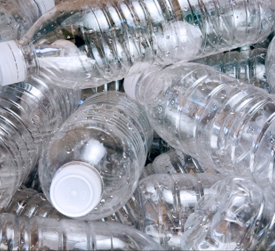Global Scans · Plastics · Weekly Summary

- Located in Las Vegas, Nevada, the advanced Polymer Center will process plastic bottles, jugs, and containers, converting them into plastic materials ready for new packaging. Packaging Gateway
- Embracing reuse systems presents an opportunity to reduce plastic pollution by 30% by 2040 and potentially decrease greenhouse gas emissions from packaging production by a staggering 80%. Pressenza
- The GAP FAC identified risks associated with single-use plastics, including the use of redundant packaging, the cost for disposal, as well as the environmental justice issues raised by production, use, and waste management disposal of single-use plastics. Federal Register
- The MoReTec plant in Wesseling will have an annual processing capacity equivalent to the amount of plastic packaging waste generated by over 1.2 million German citizens per year. LyondellBasell
- A 2776 (carried over from last year) would exempt certain plastic materials processed at chemical processing facilities from laws regulating solid waste disposal and recycling. Plastics Recycling Update
- The world's five oceans, which together cover 71% of Earth's surface, have come under threat from a range of human activities, including overfishing, plastics pollution, and climate change. Atlantic Council
- Global plastic production, estimated at 390.7 million tonnes in 2021, has increased rapidly in recent decades and will reach 1800 million tonnes by 2050. MDPI
- The use of plastics is deeply embedded in global agricultural systems and is likely to increase in the future due to population increase, stricter resource and agrochemical regulations, as well as the observed and expected impacts of climate change. Nature
- Tesco is the first supermarket to adopt its own brand of paper tissues, which will save nearly 35 tons of new soft plastic created each year. MarketScreener
- More than 1,000 organizations have signed on to the voluntary pact to make all plastic packaging recyclable, compostable or reusable by 2025, a target that many brand commitments and the U.S. Packaging Dive
- The world produces almost 400 million tonnes of plastic every year, with an estimated 14 million tonnes escaping into the ocean annually - and global plastic waste expected to rise as high as 408 million metric tonnes by 2040. BizClik Media Ltd.
- Tesco is the first supermarket to make the change to its own label pocket tissues, which will save almost 35 tonnes of new soft plastic being created each year. EMR-NAMNEWS Ltd.
- In recent years, we have set ambitious targets for recycled content (e.g. 25% recycled content in PET bottles by 2025 under the Single-Use Plastics Directive) and incentivising reduction, reuse and recycling to move towards a circular plastics economy. Innovation News Network
- Targets to reduce packaging by 5% by 2030, 10% by 2035 and 15% by 2040, and MEPs have called to reduce plastic packaging by 10% by 2030, 15% by 2035 and 20% by 2040. CosmeticsDesign-Asia.com
- With the global population expected to reach 10 billion by 2050, food security challenges will drive up the need for increased agricultural productivity - so we can expect the use of plastics to become more widespread. phys.org
- In addition to general packaging reduction targets of 5% by 2030, 10% by 2035, and 15% by 2040, Members of the European Parliament are advocating for specific targets to reduce plastic packaging: 10% by 2030, 15% by 2035, and 20% by 2040. Food Packaging Forum
- Besides the overall packaging reduction targets proposed in the regulation (5% by 2030, 10% by 2035 and 15% by 2040), MEPs want to set specific targets to reduce plastic packaging (10% by 2030, 15% by 2035 and 20% by 2040). RECYCLING magazine
- A business-as-usual scenario could spell a 50% surge in macroplastic leakage by 2040, projecting an influx of approximately 30 million tonnes of plastic into the environment, with 9 million tonnes seeping into aquatic ecosystems. The CSR Journal
- The global plastic pollution crisis has intensified the search for alternatives to single-use plastics and will spur the promotion of zero-waste initiatives in 2024. BusinessWorld
- The regulation banning single-use plastics was introduced last year and was to be phased in as part of Ottawa's commitment to achieve zero plastic waste by 2030. phys.org
- Over the years, people have accompanied a significant increase in the pollution of water bodies by plastic, reaching up to 53 Mt per year by 2030. PubMed Central (PMC)
Last updated: 05 February 2024
